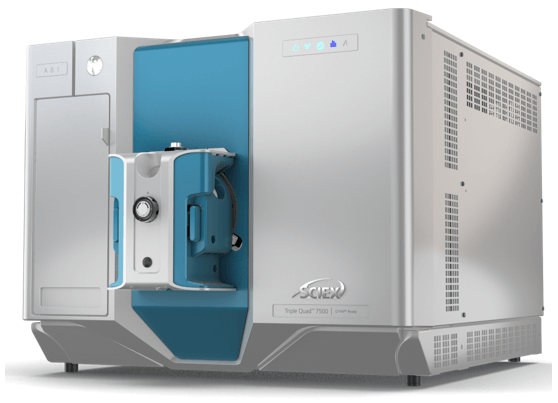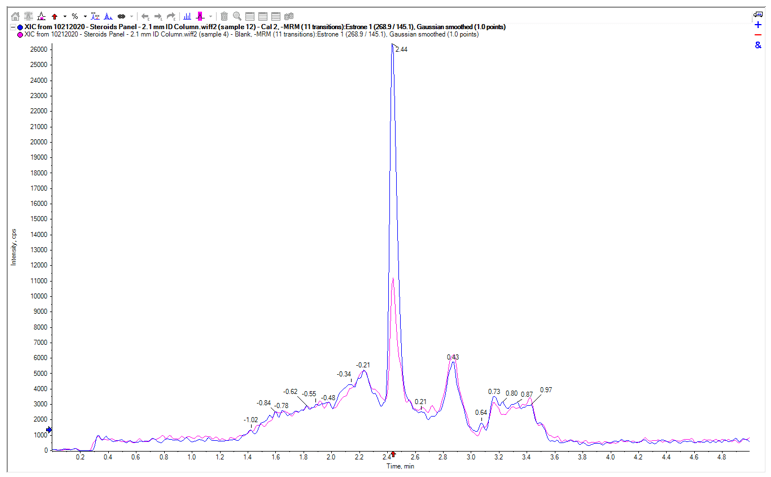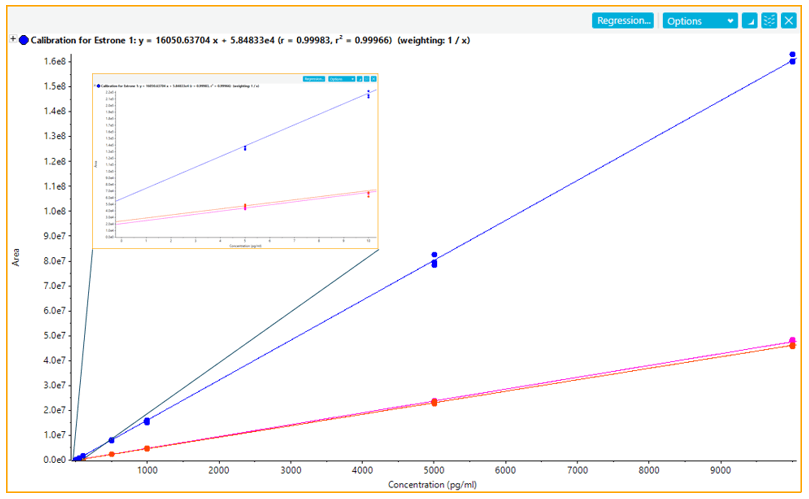Analysis of estrogens in plasma with rapid chromatography and reduced sample volume
Using the SCIEX Triple Quad 7500 system, powered by SCIEX OS software
Dan Blake1 and Pierre Negri2
1SCIEX, UK; 2SCIEX, USA
Abstract
The wide area of prevalence and biochemical importance of steroid hormones leads the estrogen group of steroids to be a highly active space in terms of biochemical and metabolic research. Steroids such as estrogens are traditionally analyzed by Radioimmunoassay (RIA) approaches, which can suffer from a number of issues believed to cause inaccuracies at lower concentrations. LC-MS/MS analysis overcomes a number of these issues, but while it is possible to achieve low limits of detection, it may potentially require the use of a large sample volume or employ a costly consumable-heavy preparation workflow to do so. In order to counteract this, the use of the new SCIEX Triple Quad 7500 system to improve sensitivity was investigated.

Introduction
Estrogens are a category of hormone responsible for, amongst other things, the development and regulation of the female reproductive system and secondary sex characteristics. There are 3 major endogenous estrogens that have estrogenic hormonal activity: estrone (E1), estradiol (E2) and estriol (E3). Estradiol is the most potent and prevalent. Estrogens are believed to be synthesized in all vertebrates and some insects.
Quantitatively, estrogens circulate at lower levels than androgens in both males and females, regardless of species. While estrogen levels are significantly lower in males compared to females, estrogens nevertheless have important physiological roles in males. This wide area of prevalence and biochemical importance leads the estrogen group of steroids to be a highly active space in terms of biochemical and metabolic research.
Steroids such as estrogens that are present in the bloodstream at such low concentrations are traditionally analyzed by radioimmunoassay (RIA). RIA approaches are known to suffer from issues such as cross-reactivity, however, leading to a lack of specificity and therefore inaccuracies at lower concentrations. LC-MS/MS analysis overcomes a number of these issues, but the measurement of in particular estradiol by LC-MS/MS poses some specific analytical challenges due to the low concentrations of this compound. While it is possible to achieve low limits of detection utilizing a standard quantitative LC-MS/MS workflow, it may potentially require the use of a large sample volume or employ a costly consumable-heavy sample preparation workflow to do so. To reduce sample volume to an acceptable level and still maintain a fast workflow with minimal consumable cost, the use of the SCIEX Triple Quad 7500 system to improve sensitivity was investigated. Figure 1 shows the analysis of a very low level (1 pg/mL, 0.05 pg on column) plasma extract of estradiol performed using the SCIEX 7500 System.
 Click to enlarge
Click to enlarge Click to enlarge
Click to enlarge Click to enlarge
Click to enlarge Click to enlarge
Click to enlarge Click to enlarge
Click to enlarge Click to enlarge
Click to enlarge